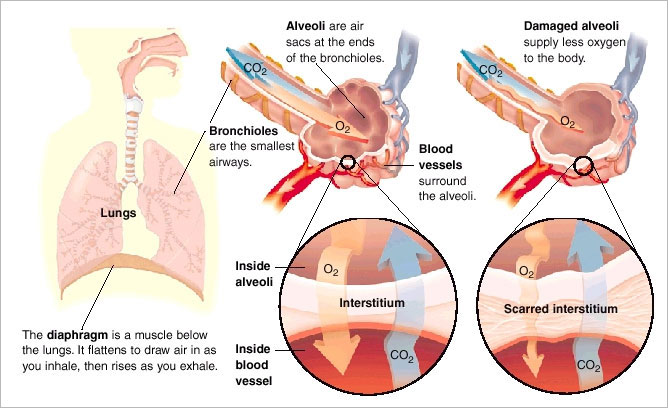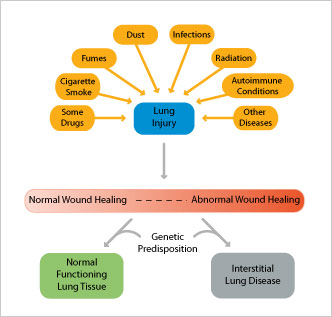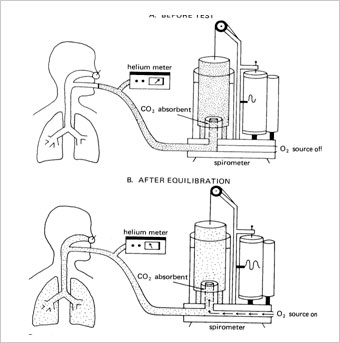Definition
Interstitial lung disease describes a large group of disorders, most of which cause progressive scarring of lung tissue. The scarring associated with interstitial lung disease eventually affects your ability to breathe and get enough oxygen into your bloodstream.
Interstitial lung disease can be caused by long-term exposure to hazardous materials, such as asbestos. Some types of autoimmune diseases, such as rheumatoid arthritis, also can cause interstitial lung disease. In most cases, however, the causes remain unknown.
Once lung scarring occurs, it’s generally irreversible. Medications can slow the damage of interstitial lung disease, but many people never regain full use of their lungs.
ILD
Symptoms
The primary signs and symptoms of interstitial lung disease are:
- Shortness of Breath
- Aggravated by Exertion
- Dry Cough
When to See a Doctor
By the time symptoms appear, irreversible lung damage has often already occurred. Nevertheless, it’s important to see your doctor at the first sign of breathing problems. Many conditions other than interstitial lung disease can affect your lungs, and getting an early and accurate diagnosis is important for proper treatment.

Causes
Interstitial lung disease seems to occur when an injury to your lungs triggers an abnormal healing response. Ordinarily, your body generates just the right amount of tissue to repair damage. But in interstitial lung disease, the repair process goes awry and the tissue around the air sacs (alveoli) becomes scarred and thickened. This makes it more difficult for oxygen to pass into your bloodstream. Interstitial lung disease can be triggered by many different things — including airborne toxins in the workplace, drugs and some types of medical treatments. In most cases, the causes are unknown.

Occupational & Environmental Factors
Long-term exposure to a number of toxins and pollutants can damage your lungs. These may include:
- Silica dust
- Asbestos fibers
- Grain dust
- Bird and animal droppings
- Radiation treatments
Imaging Tests
- Chest X-ray:The lung damage associated with many types of interstitial lung disease often shows up in characteristic patterns on chest X-rays. Occasionally, the chest X-ray is normal and further tests are required to explain your shortness of breath. Chest X-rays may also be used to track the progression of disease
- Computerized tomography (CT):CT scanners use a computer to combine X-ray images taken from many different angles to produce cross-sectional images of internal structures. A high-resolution CT scan can be particularly helpful in determining the extent of lung damage caused by interstitial lung disease.
- Echocardiogram:A sonogram for the heart, an echocardiogram uses sound waves to visualize the heart. It can produce still images of your heart’s structures, as well as videos that show how your heart is functioning. This test can evaluate the amount of pressure occurring in the right side of your heart.

